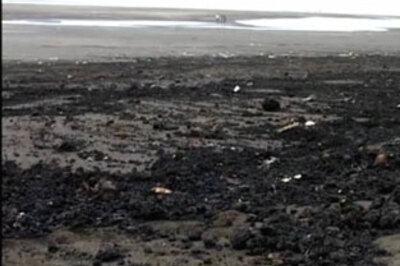
views
How happy is the blameless vestal's lot!
The world forgetting, by the world forgot.
Eternal sunshine of the spotless mind!
Each pray'r accepted, and each wish resign'd...
From Alexander Pope's Eloisa to Abelard
In screenwriter Charlie Kaufman's 2004 romantic fantasy whose title was inspired by the above poem, two lovers choose to erase their memories to free themselves of one another. They undergo targeted memory erasure by a fictitious company, Lacuna Inc. "Don't forget, with Lacuna, you can forget." The film — 'Eternal Sunshine of the Spotless Mind' — was critically acclaimed.
I still would have written it differently. In my version, Lacuna's mind-blowing technology would be able to strengthen, not erase memories.
I have dissected the human body, read Plato's 'Republic', studied French for five years, and squandered hours learning how to dive (what can I say, I have buoyancy issues). I would like the power to recall those memories on demand. Instead, I can barely remember where I put my reams of notes and my PADI card.
It would be nice to remember what club I hit when I blasted it from behind the trees off the 7th fairway to win the hole. Or what line I said that had my audience smile. I could go on, but I think I've made my point. We preach a lot each day, usually (hopefully) learn much more, and recall very little of it all. Can we dream of a day when we can instill permanency to some memories that matter? Basic principles first.
There are three steps to consolidating a memory: Encoding, storage and retrieval. Let's examine what happens when you read this article. Your brain, knowing no better, perceives it as a novel sensory stimulus, worthy of being retained. This triggers molecular cascades in the brain complex enough to give us both headaches.
Your memory's CEO — the hippocampus — will probably filter out those details as not being important, so I will just save me the retrieval and you the filtering and omit them here. Your brain processes the colour and texture of this page, the sounds around you, and other sensory cues, and integrates these into a single memory. As you pay more attention to what you read, you stop hearing the sound of the fan; the growls of your stomach become less noticeable.
The greater your attention, the stronger and more specific your memories become. You move from simply encoding that you are reading, to that you are reading about memory, to the specific details in this piece. It is no wonder that memory athletes (yes, such people exist) compete with dark glasses and noise-cancelling headsets. The more the brain can focus on a particular stimulus, the greater its encoding and eventual retrieval will be.
Congratulations or consolations, you have just encoded a memory with me! This memory exists as a series of connections or synapses between brain cells. Synapses may be created for the first time, for example, when you learn something new, taste my friend Ramzi's mixer-made green chicken curry surprise, or experience the initial thrill of the aurora borealis.
Advertisers are not crazy when they invest millions of dollars to present you something so novel that it generates an entirely unique neural network that they can own, repeatedly reinforce, and recall upon simple visual or auditory cues. Do co mo, do co mo, do co mo... so where are you moving your mobile phone connection?
The neural connections of a memory may crisscross the brain. When you remember a friend who owes you money, you may visualise his face and access the visual cortex at the back of your head. The picture of his face may fire your amygdala in the centre of your brain that regulates the anger that starts rising. A memory is not a discrete physical unit in the brain.
It is an expansive network of connections, like the plot to a James Joyce novel that requires frequent access to a number of sections of the book to keep things in order.
It is no wonder that with the disruption of these delicate networks, one of the greatest side-effects of traumatic brain injury is memory loss. Luckily, due to something called neural plasticity, new networks can form.




















Comments
0 comment